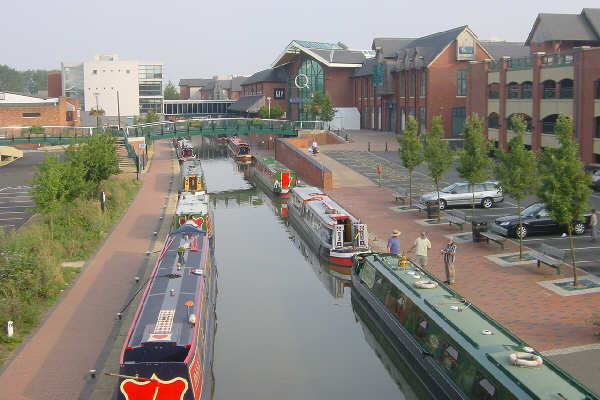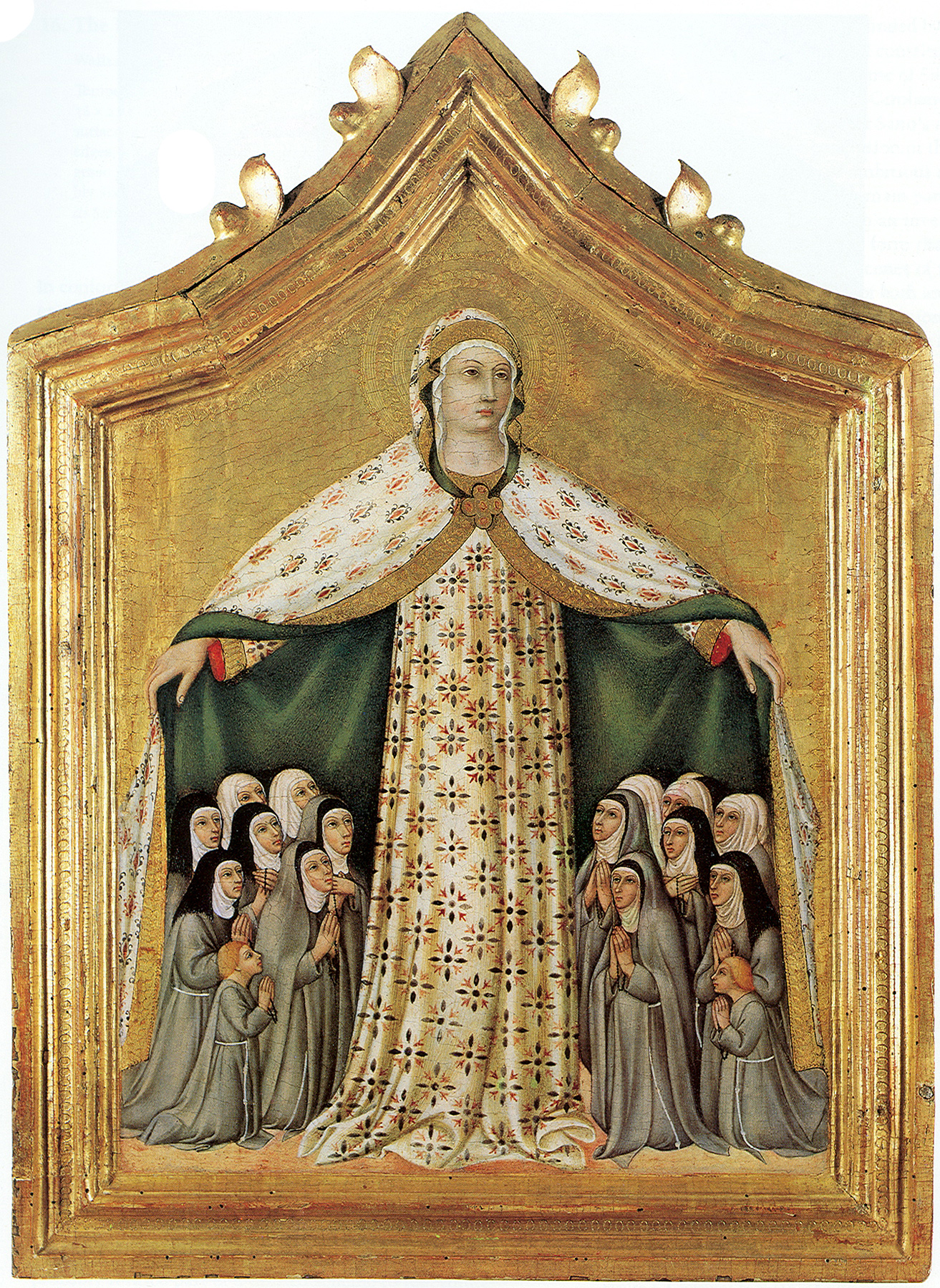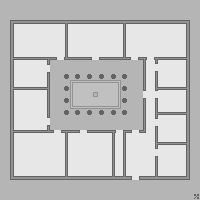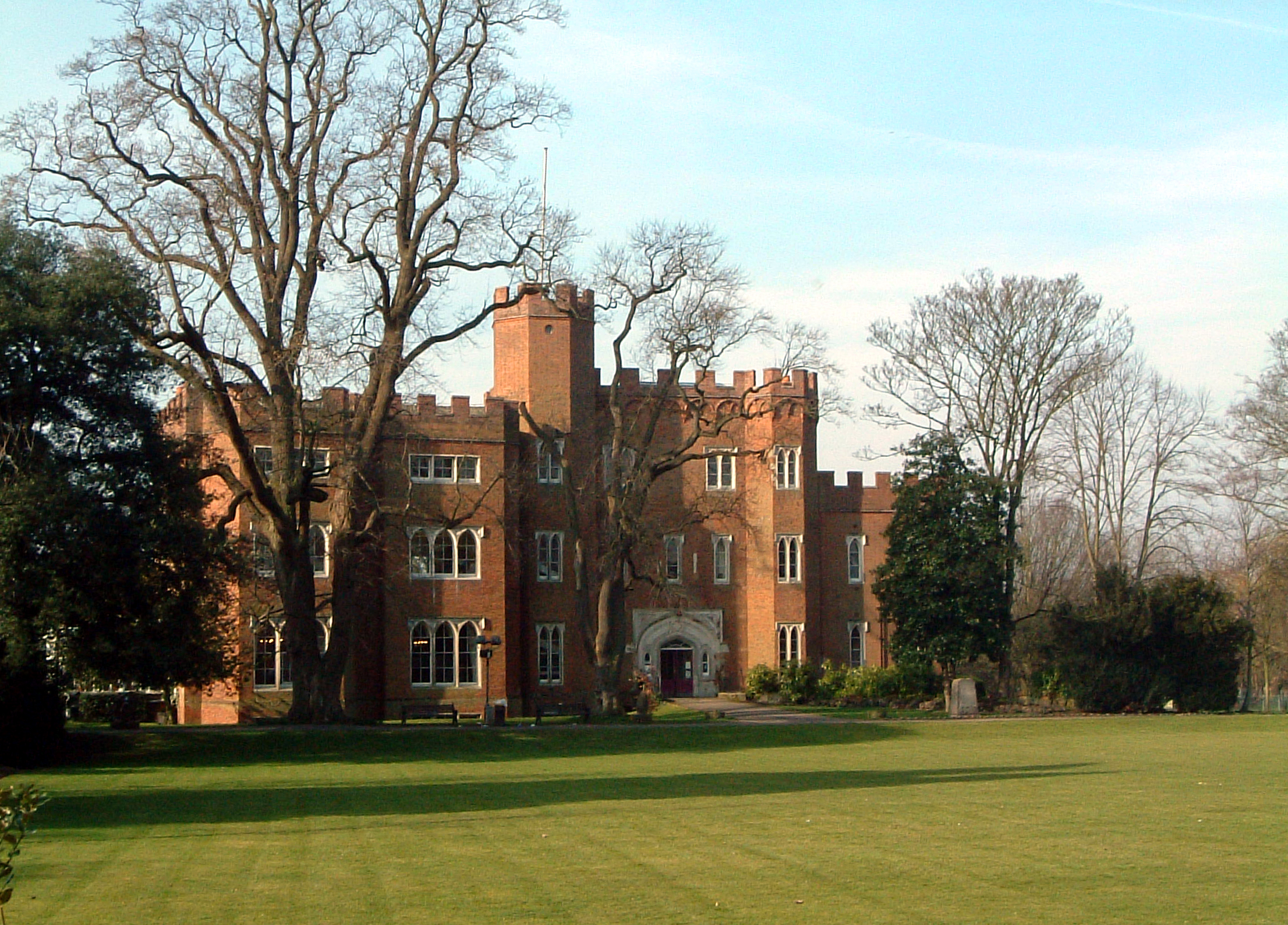|
Culworth
Culworth is a village and civil parish about north of Brackley in West Northamptonshire, England. Culworth is also about northeast of the north Oxfordshire town of Banbury. The village stands on the brow of a hill about above sea level. The 2011 Census recorded the parish's population as 445. History Toponymy The villages name means 'Cula's enclosure'. Roman coin A third-century Roman coin from the brief reign of the Roman emperor Quintillus was found in the parish before 1841. Manor Berry Hill, just north of the parish church, is a medieval ringwork, built probably late in the 11th century. It is a scheduled monument. On its southwest side, part of its circular ditch was cut away in the 19th century to make the garden of the Old Rectory, but otherwise it survives intact. There are similar ringworks at Sulgrave, Weedon Lois and Weston. William de Culworth was sheriff of Hertfordshire and Constable of Hertford Castle in 1230 and 1234. The D'Anvers family held th ... [...More Info...] [...Related Items...] OR: [Wikipedia] [Google] [Baidu] |
Danvers Baronets
There have been two baronetcies created for persons with the surname Danvers, one in the Baronetage of England and one in the Baronetage of Great Britain. Both creations are extinct. The D'Anvers Baronetcy, of Culworth in the Northamptonshire, County of Northampton, was created in the Baronetage of England on 21 March 1643 for Samuel D'Anvers. The title became extinct on the death of the fifth Baronet, Sir Michael D'Anvers, in 1776. The Danvers Baronetcy, of Swithland in the Leicestershire, County of Leicester, was created in the Baronetage of Great Britain on 4 July 1746 for Sir Joseph Danvers, 1st Baronet, Joseph Danvers, Member of Parliament for Boroughbridge (UK Parliament constituency), Boroughbridge, Bramber (UK Parliament constituency), Bramber and Totnes (UK Parliament constituency), Totnes. The title became extinct on the death of the second Baronet in 1796. Danvers baronets, of Culworth (1643) *Sir Samuel Danvers, 1st Baronet (1611–1682) *Sir Pope Danvers, 2nd Baron ... [...More Info...] [...Related Items...] OR: [Wikipedia] [Google] [Baidu] |
Sulgrave
Sulgrave is a village and Civil parishes in England, civil parish in West Northamptonshire, England, about north of Brackley. The village is just south of a stream that rises in the parish and flows east to join the River Tove, a tributary of the River Great Ouse, Great Ouse. The village's name means 'grove in a gully' or perhaps, 'pit/trench in a gully'. Alternatively, the specific may be a personal name, 'Sula'. Prehistory Just over north of the village is Barrow Hill, a bowl barrow beside Banbury Lane between Culworth and Weston, Northamptonshire, Weston. The barrow is oval, about long, wide and up to high. It is Bronze Age Britain, Bronze Age and may date from between 2400 and 1500 BC. It may have been surrounded by a ditch, but this can no longer be traced. The mound may have been re-used in the England in the Middle Ages, Middle Ages as the base for a windmill. The barrow is largely intact, although it has been partly disturbed by European badger, badgers. It is a sch ... [...More Info...] [...Related Items...] OR: [Wikipedia] [Google] [Baidu] |
Brackley
Brackley is a market town and civil parish in the West Northamptonshire unitary authority area of Northamptonshire, England. It is on the borders with Oxfordshire and Buckinghamshire, east-southeast of Banbury, north-northeast of Oxford, and southwest of Northampton. Historically a market town based on the wool and lace trade, it was built on the intersecting trade routes between London, Birmingham, the Midlands, Cambridge and Oxford. Brackley is close to Silverstone and home to the Mercedes AMG Petronas F1 Team. In 2021 the parish had a population of 16,195. History The place-name 'Brackley' is first attested in the Domesday Book of 1086, where it appears as ''Brachelai''. It appears as ''Brackelea'' in 1173 and as ''Brackeley'' in 1230 in the Pipe Rolls. The name means 'Bracca's glade or clearing'. Brackley was held in 1086 by Earl Alberic, after which it passed to the Earl of Leicester, and to the families of De Quincy and Roland. In the 11th and 12th centuries Brack ... [...More Info...] [...Related Items...] OR: [Wikipedia] [Google] [Baidu] |
West Northamptonshire
West Northamptonshire is a Unitary authorities of England, unitary authority area in the Ceremonial counties of England, ceremonial county of Northamptonshire, England, and was created in 2021. It contains the county town of Northampton, as well as the towns of Daventry, Brackley and Towcester, and the large villages of Brixworth and Long Buckby; the rest of the area is predominantly agricultural villages though it has many lakes and small woodlands. The West Coast Main Line and the M1 motorway, M1 and M40 motorway, M40 motorways pass through the district, and it includes the site of the Roman town of Bannaventa and the grade I listed building, listed Althorp, Althorp House and its estate. History West Northamptonshire was formed on 1 April 2021 through the merger of the three non-metropolitan districts of Daventry District, Daventry, Northampton Borough Council, Northampton, and South Northamptonshire. The new West Northamptonshire Council therefore absorbed the functions of ... [...More Info...] [...Related Items...] OR: [Wikipedia] [Google] [Baidu] |
Banbury
Banbury is an historic market town and civil parish on the River Cherwell in Oxfordshire, South East England. The parish had a population of 54,335 at the 2021 Census. Banbury is a significant commercial and retail centre for the surrounding area of north Oxfordshire and southern parts of Warwickshire and Northamptonshire which are predominantly rural. Banbury's main industries are motorsport, car components, electrical goods, plastics, food processing and printing. Banbury is home to the world's largest coffee-processing facility ( Jacobs Douwe Egberts), built in 1964. The town is famed for Banbury cakes, a spiced sweet pastry. Banbury is located north-west of London, south-east of Birmingham, south-east of Coventry and north-west of Oxford. Toponymy The name Banbury may derive from "Banna", a Saxon chieftain said to have built a stockade there in the 6th century (or possibly a byname from meaning ''felon'', ''murderer''), and / meaning ''settlement''. In Anglo Sa ... [...More Info...] [...Related Items...] OR: [Wikipedia] [Google] [Baidu] |
Veneration Of Mary In Roman Catholicism
The veneration of Mary in the Catholic Church encompasses various devotions which include prayer, pious acts, visual arts, poetry, and music devoted to her. Popes have encouraged it, while also taking steps to reform some manifestations of it.For example, on March 12, 1969, Pope Paul VI reduced and rearranged the number of Marian feast days in ''Sanctitas clarior''. Several of his predecessors did similarly. The Holy See has insisted on the importance of distinguishing "true from false devotion, and authentic doctrine from its deformations by excess or defect". There are significantly more titles, feasts, and venerative Marian practices among Roman Catholics than in other Western Christian traditions. The term '' hyperdulia'' indicates the special veneration due to Mary, greater than the ordinary '' dulia'' for other saints, but utterly unlike the '' latria'' due only to God. Belief in the incarnation of God the Son through Mary is the basis for calling her the Mother of God, ... [...More Info...] [...Related Items...] OR: [Wikipedia] [Google] [Baidu] |
Courtyard House
A courtyard house is a type of house—often a large house—where the main part of the building is disposed around a central courtyard. Many houses that have courtyards are not courtyard houses of the type covered by this article. For example, large houses often have small courtyards surrounded by service rooms or corridors, but the main rooms are not disposed around a courtyard. Blenheim Palace in England is an example of such a house. The main rooms of a courtyard house often open onto the courtyard, and the exterior walls may be windowless and/or semi-fortified and/or surrounded by a moat. Courtyard houses of this type occupy an intermediate position between a castle or fortress, where defence is the primary design consideration, and more modern plans in which defence is not a consideration at all. In England the courtyard house was a popular design for large houses in the sixteenth century, after noblemen had stopped building themselves castles, but before thoughts of defenc ... [...More Info...] [...Related Items...] OR: [Wikipedia] [Google] [Baidu] |
Aisle
An aisle is a linear space for walking with rows of non-walking spaces on both sides. Aisles with seating on both sides can be seen in airplanes, in buildings such as churches, cathedrals, synagogues, meeting halls, parliaments, courtrooms, theatres, and in long passenger vehicles. An aisle floor may be level or, as in theatres, sloping upward from a stage. Aisles also cross through shops, where they have shelving on either side; warehouses, flanked by storage pallets; and factories, where they separate different work areas. In health clubs, exercise equipment is normally arranged along aisles. They are distinguished from corridors, hallways, walkways, footpaths, pavements (''American English'' sidewalks), trails, paths and open areas of buildings: aisles lie between other open or seating areas, which are all enclosed within a structure. Spaces between buildings are not considered aisles, regardless of their size. The word is related to French ''aile'' (wing). Typic ... [...More Info...] [...Related Items...] OR: [Wikipedia] [Google] [Baidu] |
Baronet
A baronet ( or ; abbreviated Bart or Bt) or the female equivalent, a baronetess (, , or ; abbreviation Btss), is the holder of a baronetcy, a hereditary title awarded by the British Crown. The title of baronet is mentioned as early as the 14th century; however, in its current usage it was created by James VI and I, James I of England in 1611 as a means of raising funds for the crown. Baronets rank below barons, but seemingly above all grand cross, knights grand cross, knight commander, knights commander and knight bachelor, knights bachelor of the British order of chivalry, chivalric orders, that are in turn below in chivalric United Kingdom order of precedence, precedence than the most senior British chivalric orders of the order of the Garter, Garter and the order of the Thistle, Thistle. Like all British knights, baronets are addressed as "Sir" and baronetesses as "Dame". They are conventionally seen to belong to the lesser nobility, although William Thoms in 1844 wrote tha ... [...More Info...] [...Related Items...] OR: [Wikipedia] [Google] [Baidu] |
Manorialism
Manorialism, also known as seigneurialism, the manor system or manorial system, was the method of land ownership (or "Land tenure, tenure") in parts of Europe, notably France and later England, during the Middle Ages. Its defining features included a large, sometimes fortified manor house in which the lord of the manor and his dependants lived and administered a rural estate, and a population of labourers or Serfdom, serfs who worked the surrounding land to support themselves and the lord. These labourers fulfilled their obligations with labour time or in-kind produce at first, and later by cash payment as commercial activity increased. Manorialism was part of the Feudalism, feudal system. Manorialism originated in the Roman villa system of the Late Roman Empire, and was widely practised in Middle Ages, medieval western Europe and parts of central Europe. An essential element of feudal society, manorialism was slowly replaced by the advent of a money-based market economy and new ... [...More Info...] [...Related Items...] OR: [Wikipedia] [Google] [Baidu] |
Hertford Castle
Hertford Castle is a Norman era castle built beside the River Lea in Hertford, the county town of Hertfordshire, England. Most of the internal buildings of the structure have been demolished. The main surviving section is the Tudor gatehouse, which is a Grade I listed building. Parts of the bailey walls on the east side of the castle also still stand, and are a Grade II* listed building. History Medieval history Hertford Castle was built on a site first fortified by Edward the Elder around 913. By the time of the Norman Invasion in 1066, a motte and bailey were on the site surrounded by a moat. William the Conqueror granted the castle to Peter de Valognes, the High Sheriff of Essex and Hertfordshire. Henry II took a great interest in the castle and its potential and it was practically reconstructed between 1170 and 1174. This included the building of the flint walls, drawbridges and gatehouses. The castle was further strengthened during the reign of Richard I by his regen ... [...More Info...] [...Related Items...] OR: [Wikipedia] [Google] [Baidu] |








